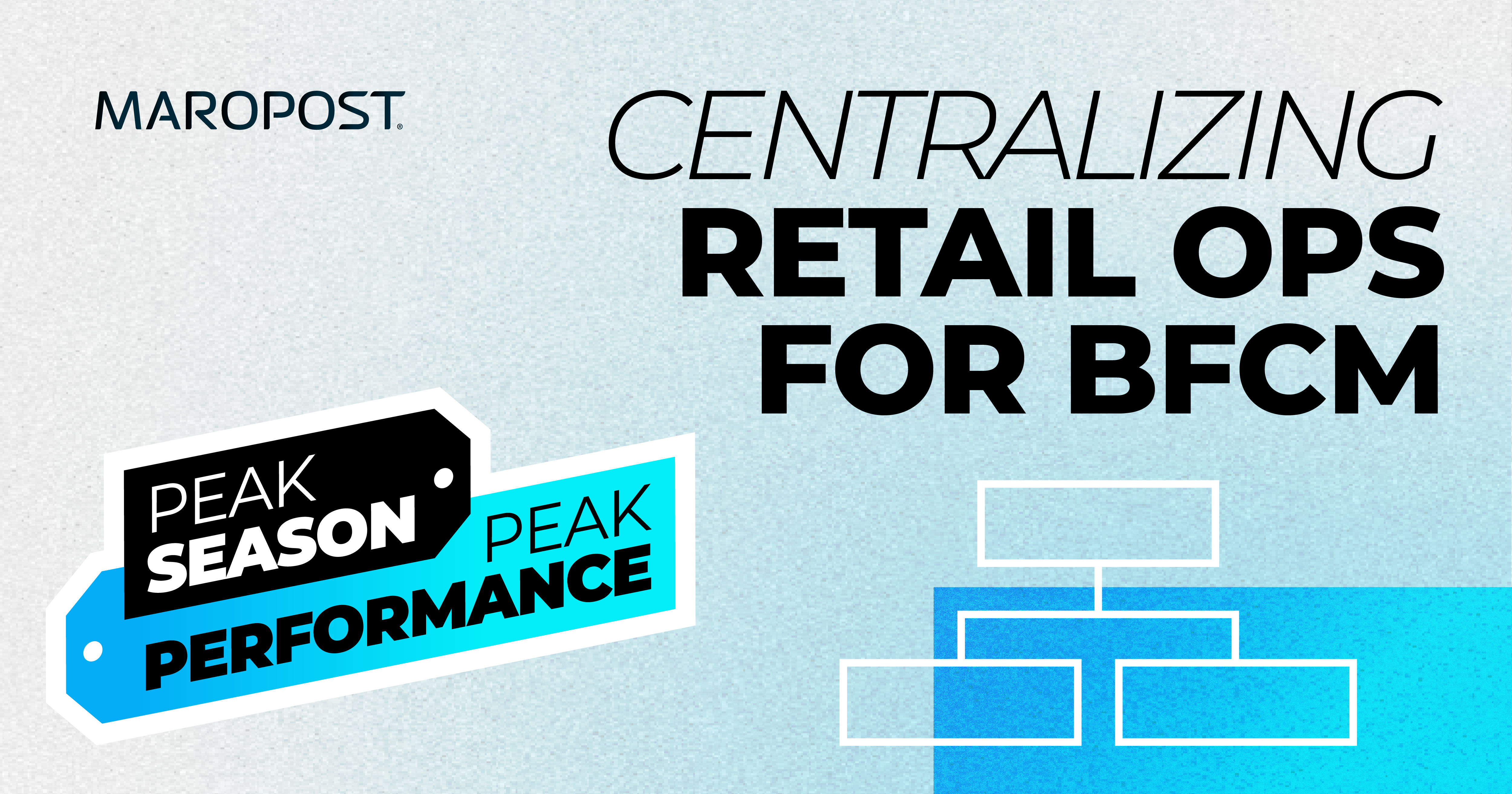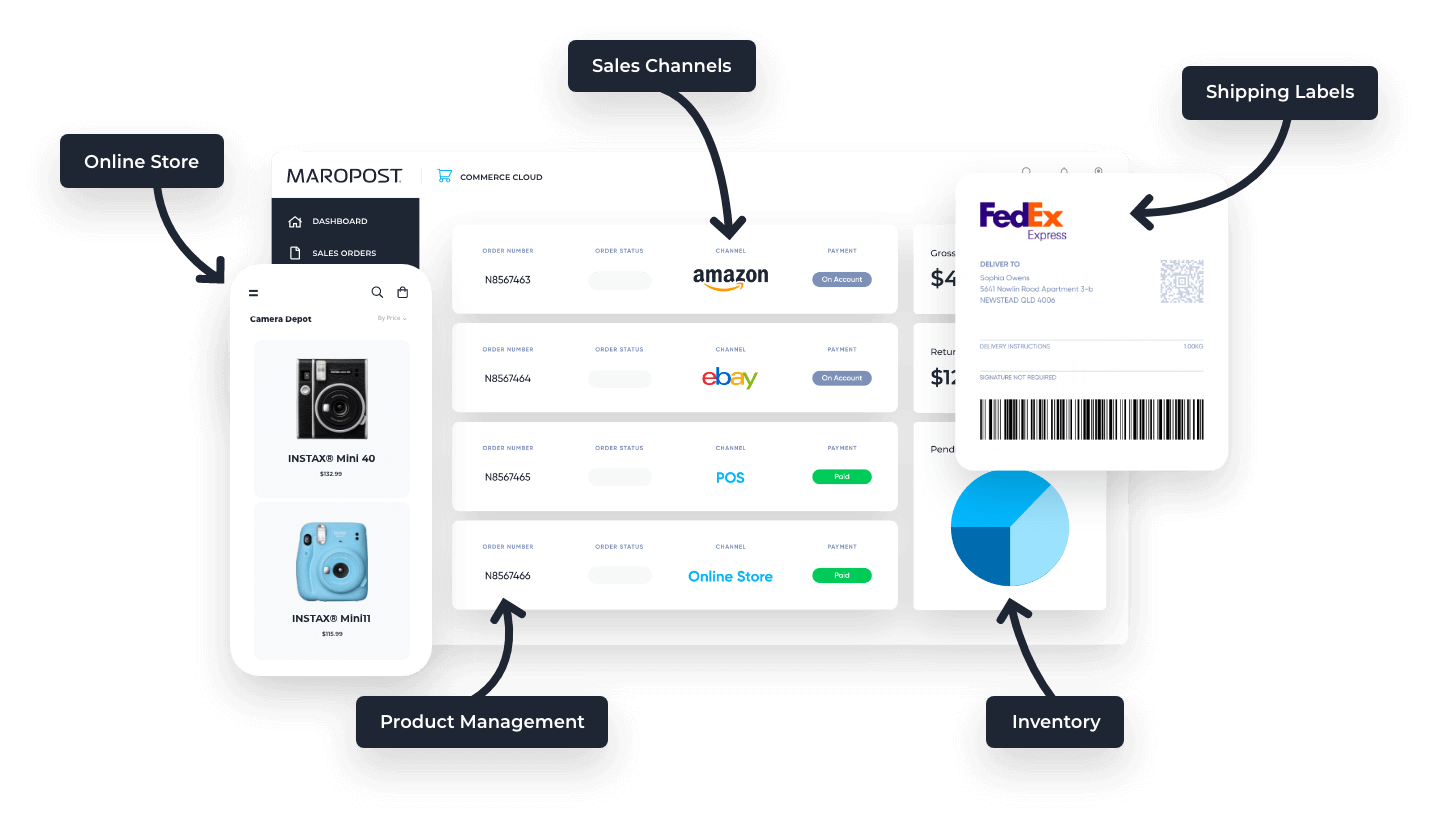As Black Friday and Cyber Monday (BFCM) approach, retail and ecommerce operations teams are preparing for the busiest weekend of the year—and smooth operations across the organization are more important than ever.
Online shopping gets a lot of attention on BFCM, but post-pandemic in-store shopping is still on the rise: There were 76.2 million in-store shoppers on Black Friday in 2023, a 5% increase from 2022. And with 81% of shoppers reporting that they research products online before visiting the store, a well-managed multichannel retail approach is crucial.
According to a 2022 survey, 53% of customers had left a brand due to a single bad customer experience. Stockouts and inventory discrepancies, service and delivery delays, uncoordinated in-store operations, and mismanaged promotions are all risks for losing loyal or potential customer—especially during peak season. Sales events often attract new customers, and delivering a seamless experience can be crucial in turning them into regular shoppers, driving loyalty beyond a one-time purchase.
Centralizing your retail operations is key to meeting the surge in demand during BFCM and empowering your teams to deliver exceptional customer experiences, both in store and online.
Retail operations bottlenecks start with your point of sale
As retail brands grow, their POS systems often become bottlenecks. The systems they use are often great in the early stages, but as brands scale, the limitations of traditional solutions become painfully apparent. Brands need a serious capacity to integrate data across customers and the supply chain to have a smooth-running multichannel retail environment, especially during peak periods like BFCM.
A disjointed or insufficient solution can lead to fragmented data and delayed responses to market demands—meaning a high risk of lost revenue and all your email marketing efforts going to waste. And while more advanced systems exist, they often come with unsustainable costs for growing brands.
These challenges only intensify during peak season. The key is to find a solution that allows you to centralize all your data in real time—before the holiday rush. Without it, your inventory counts might not sync across channels, causing discrepancies between what customers see online and what’s available in-store, resulting in lost sales and frustrated shoppers.
Three reasons centralization matters
Imagine this scenario: A bunch of your new products are coming in for peak season. As the products arrive at your stores and warehouses, your system instantly updates stock levels across all channels. As sales surge on BFCM, every online and in-store transaction automatically adjusts your inventory. Your POS system triggers real-time restocks from suppliers when stock runs low, and the entire supply chain flows seamlessly. Your store employees have access to real-time data at every point in the supply chain, and customers are all finding exactly what they’re looking for.
This is the power of centralized retail operations on BFCM. Here’s a breakdown of what this can look like:
1. Efficient operations across the organization
By centralizing your retail data across your supply chain and managing it in real time, you’re creating a foundation that allows your whole company to work more efficiently, ultimately leveling up your brand and customer experience.
Centralization means you can see stock across all channels, including in stores, online, in your warehouses, and in transit (which is particularly useful for items for which you don’t keep many on hand, like large parcel or perishable goods). The right solution will even see your suppliers’ stock levels.
All of this means less of your team’s time spent on data entry tracking down inventory for customers on high-volume sales days. Your in-store employees will be enabled to assist customers and even make sales when they don’t have the stock. With that level of service, you’ll have a lot more loyal customers coming out of peak periods like BFCM.
Your IT team will also be relieved from juggling disparate systems, moving them away from constant troubleshooting—and even better if you go with a cloud-based solution that eliminates the cost and risk associated with on-site servers. With centralized data, your IT team can be more focused on tasks that uplevel the business, like fine-tuning customer data and developing personalized shopping experiences that increase conversion rates and customer loyalty.
2. Enhanced customer experience across channels
Centralization isn’t just about what happens behind the scenes—it directly impacts the customer experience. With a centralized system, your customers will have a noticeably consistent shopping experience, whether they’re browsing online or visiting your physical stores—or both.
People are more likely to buy when they don’t have to work as hard to get what they’re looking for. The goal is to minimize inventory discrepancies and arm in-store employees with granular data and options for customers to get what they need easily. It should be simple, for example, to check current stock or stock in transit for any store or online, then easily set up any order to be shipped or picked up anywhere.
With 90% of customers saying that a positive customer experience makes them more likely to buy again, centralizing your data is key to increasing customer loyalty—and the BFCM rush is the perfect opportunity to earn a lot of customers who are happy to return.
3. Empowered, data-driven decision making
A centralized system empowers your team with the insights needed to make informed decisions in real-time during peak periods and beyond. With all your data updated and aggregated into a single system, you can quickly analyze sales trends, monitor inventory levels, and understand customer behavior as it happens. This real-time visibility allows your team to adjust strategies on the fly, whether it’s reallocating stock to high-demand locations or even optimizing BFCM promotions and marketing campaigns.
Then, after the peak season passes, you’ll have access to a ton of data that will allow you to make merchandising and marketing decisions throughout the year and into the next BFCM.
Centralizing retail operations is about more than managing inventory or processing transactions efficiently—it’s about setting up your whole business to be agile and efficient. Being more reliable for customers and responsive to data during peak periods like BFCM and throughout the year is what will set you up for a strong and sustainable revenue stream.
Want to see how Retail Express can streamline your retail operations? Book a demo.
Need to chat about your mobile marketing strategy?
More than 10,000 marketers use Maropost to engage with their prospects and customers through emails, SMS, social media and more. We’re here to help you grow your business!
Chat Now

